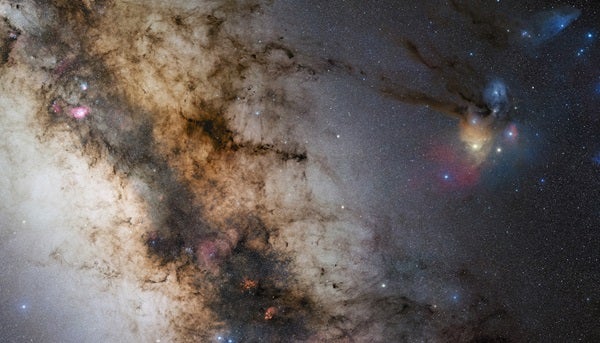The word dust comes up often in descriptions of galaxies and elsewhere. What is the nature of dust?
To most people, dust can be any combination of small particles of soil, rock, human skin, human or animal dander, pollen, and tiny bits of fiber. But space dust is different from the dust we’re familiar with here on Earth.
Astronomers are also talking about small grains of material when they talk about dust, but unlike on Earth, a majority of those grains consist of carbon and silicates. These materials are primarily born from the winds of evolved stars or supernova explosions.
Astronomers can categorize dust based on where they see it. The first category is dust between galaxies, known as intergalactic dust. The second is in the space between stars within galaxies, or interstellar dust. And the third is interplanetary dust, which, as the name may suggest, can be found between planets in solar systems.
In the case of interplanetary dust, the grains usually also contain a mixture of local ingredients added to the mix mentioned above. For instance, collisions between planets and asteroids early in the system’s history contribute to interplanetary dust clouds. Comets also add their own twist as they travel close to their star. This heats up the comet, vaporizing its ice and releasing dust along its orbit.










